Slice vs. Draw: Secrets to Improve Golf Shot
Do You Know the Difference Between Hitting a Slice vs. Draw? Discover the Key Techniques to Finally Stop Slicing and Start Drawing the Ball.
Are you a little fuzzy on the difference between the slice vs. draw? Have you been trying to get rid of your slice for years, only to see that same nasty shot ruin your game time and again? Do you feel like you’re just not good enough to draw the golf ball, since classic advice hasn’t helped?
Whatever struggle brought you to this article, I have the answers you’re looking for.
The majority of casual golfers struggle with the slice constantly. They get mixed messages about how to fix the slice or even whether their bad shots actually are slices.
Stick with me. I’m going to explain:
- The difference between a slice vs. draw
- How to recognize bad habits in your setup and swing
- Tips for hitting a nice, high draw
- How to fix the slice with your iron and with your driver
Let’s dig in.
Slice vs. Draw: Understand the Difference
Slice vs. draw.
Hook vs. draw.
If you sometimes feel a little lost in golf jargon, you’re not alone. Beginner golfers especially struggle with the terminology. And it doesn’t help when you get most of your information from golf partners who can’t clearly articulate the differences for themselves.
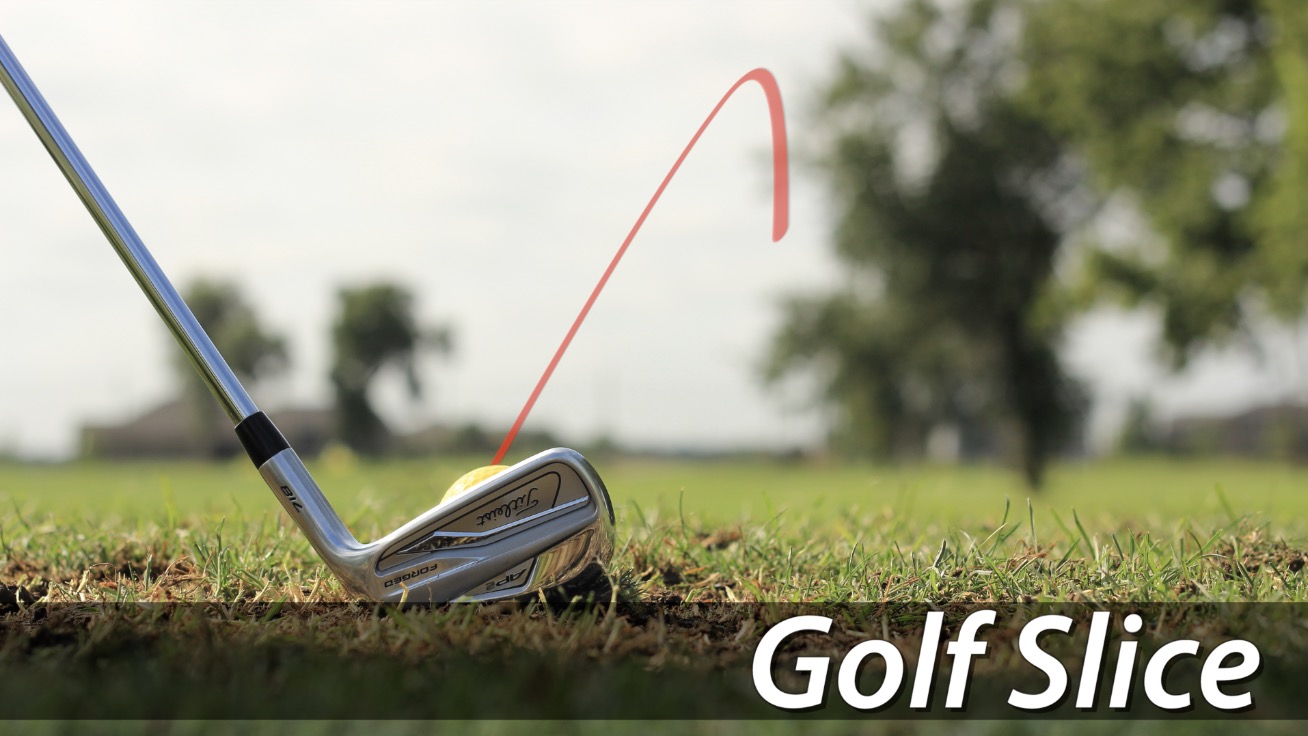
Before I can help you fix your slice, I need to clarify what a slice actually looks like. We also need to talk about the ways in which a draw is different, and why that difference matters for your golf game.
Please note, the following explanations assume you’re a right-handed golfer. If you’re left-handed, reverse these insights. For lefties, “right” means “left,” and “left” means “right.”
What is a Slice?
A slice is a wayward golf shot that travels high and curves to the right.
This is different from a shank. A shank hits off the heel or hosel of your golf club. It travels low and directly to the right.
In this article, I’ll explain how to fix the most common errors causing golfers to slice the ball. I’ll keep it simple for now. But, if you’d like a deeper dive into the physics of golf, you can check out our free ebook, Science of the Slice.
What is a Draw?
A draw is a more controlled shot that curves gently from the right to the left. This type of golf shot can be incredibly beneficial to your game.
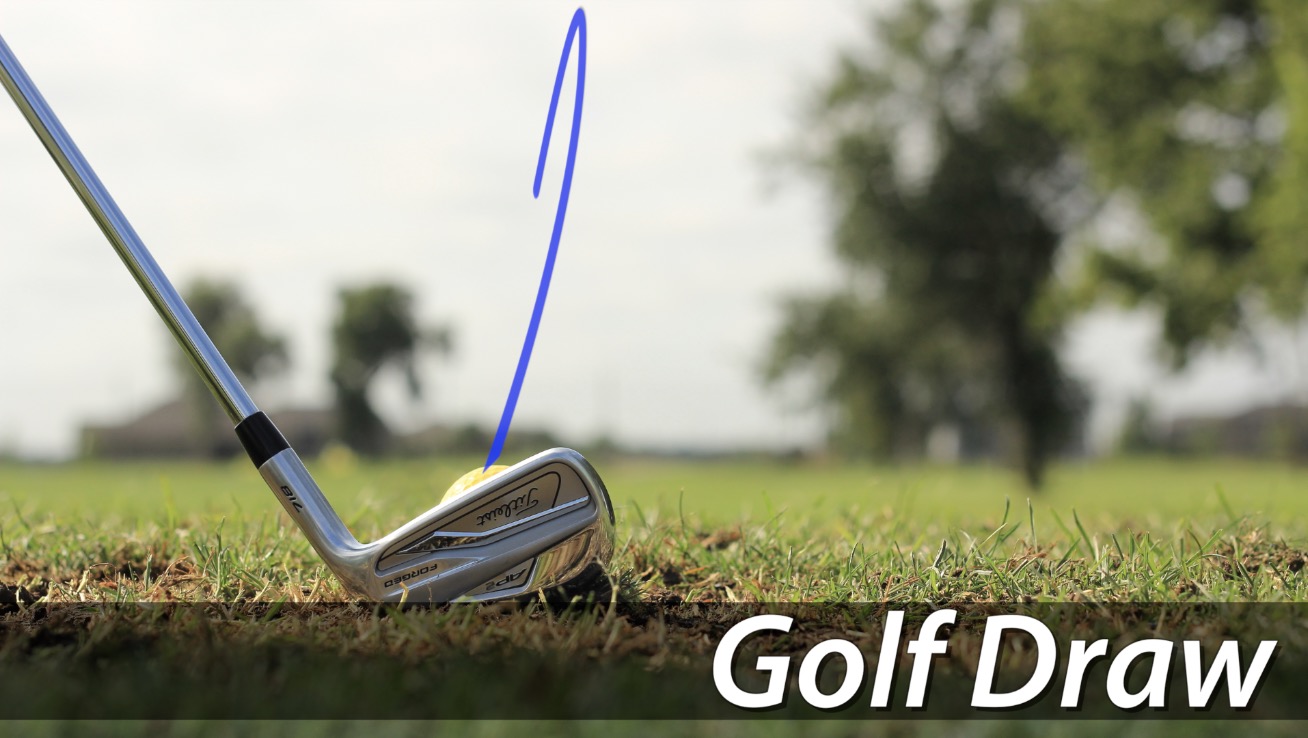
How is a Draw Different from a Pull Hook?
It can be easy to confuse a draw with a pull hook. But please know, these are very different shots.
While both the draw and the pull hook curve to the left, a pull hook is not controlled. It flies low, throws you off course, and compromises your distance.
A pull hook typically occurs when you swing your arms and club out and across the body on the downswing. This forces the club face to close dramatically.
A draw, however, happens when you hit the golf ball from the inside. That is to say, your club head follows a downward swing path that stays in closer to your body. This detail is key for hitting a nice, high draw.
A lot of the advice that follows is designed to help you hit the ball from the inside.
What are the Benefits of Hitting a Draw?
Why does it matter? What are the benefits of a slice vs. draw?
Well, honestly, there are no direct benefits to hitting a slice. A slice is an accident caused only by error. It derails your shot and adds strokes to your scorecard.
It’s good to hit a draw for a few reasons.
For one, when you draw the ball, you get better distance. A draw travels farther and rolls out nicely.
You also have a better swing overall when you play with the intention of hitting a draw . . . especially when using an iron.
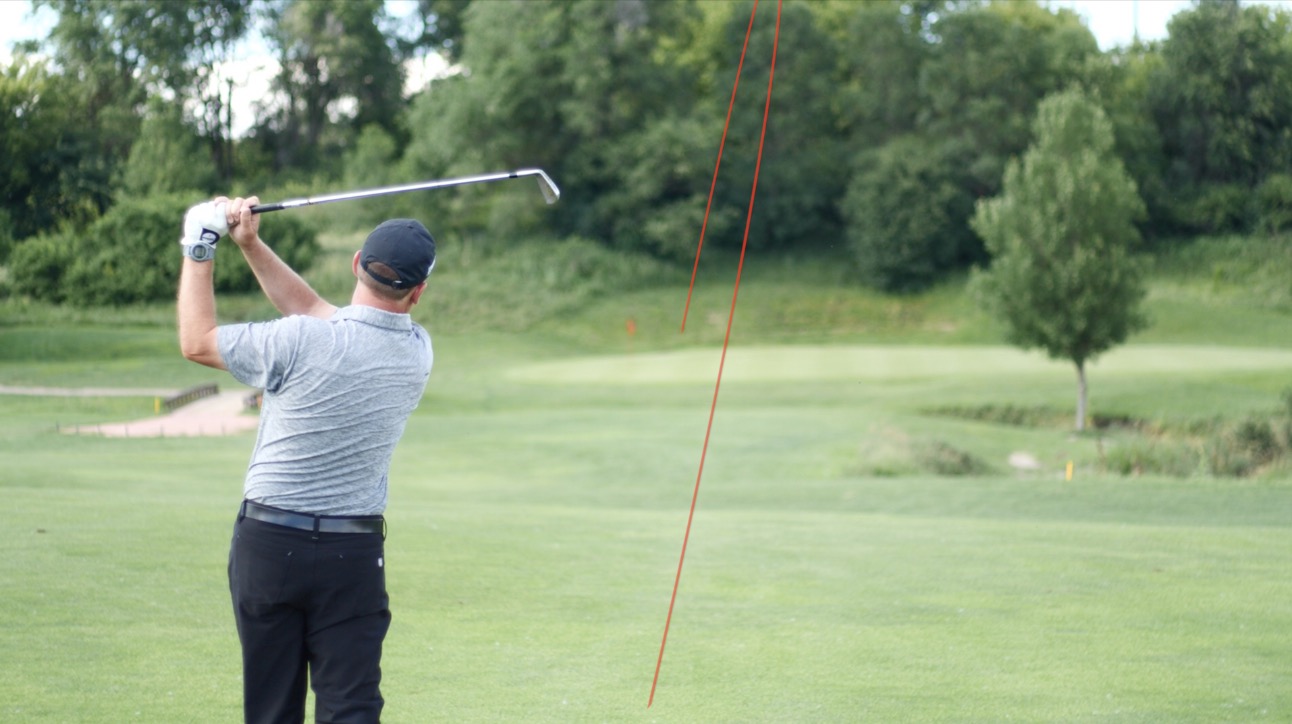
The technique you use to draw the ball ensures solid contact, catching the ball right in the sweet spot. Your club face makes contact at an ideal angle. Your entire swing is simply a better golf swing.
So how do you do it? How do you hit a draw?
Well, you start by eliminating the problems that cause you to slice it.
How to Fix a Slice
Ready to finally get rid of that nasty slice? I’m about to share some shockingly simple adjustments you can make to eliminate the slice from your golf game.
But first, some important business.
Forget Old Advice
The entire history of golf is riddled with terrible advice for fixing the slice. It’s not history’s fault. We just didn’t have the technology we have now.
These days, we understand so much more about what causes the slice. Not only that, we’ve learned that a lot of what we previous believed about the ideal swing path and face position was dead wrong.
What you need to know is that all these discoveries are still very new. As a result, much of that old, ineffective advice is still circulating. Before we get into these tips to help you stop slicing, I’m going to ask you for a favor.
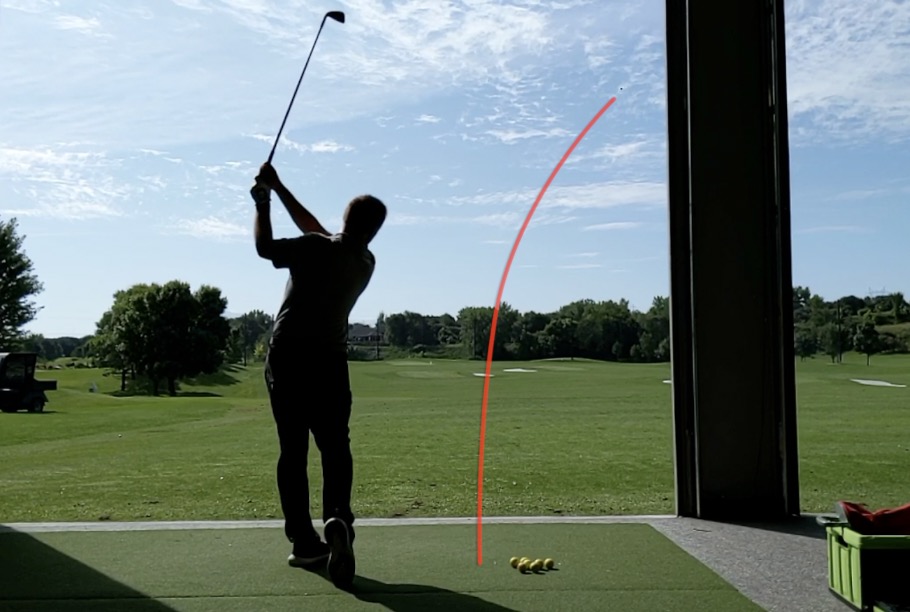
Forget everything you think you know about slicing. It’s probably wrong. And if you get stuck on those old concepts, you’re going to have a hard time grasping these newer ideas.
With that in mind, let’s get into it.
Easy Fix: Adjust Your Setup
Before we get into backswing, swing plane, or any other golf swing mechanics, we need to review your setup.
When you’re trying to fix your slice, your setup should be the first place you look. Bad habits in your setup position can doom your entire shot.
Take a look at these three checkpoints.
Pressure in the Feet
When you get in position to hit the ball, how is pressure distributed between your feet? (You might also think of this as weight distribution.)
Do you feel more weight in your lead foot? In your trail foot? Does it seem like you have equal pressure on both feet?
In order to hit a draw, you want to have about 60% of your weight on your lead foot and 40% on your trail foot. If you’re constantly slicing the ball, you might have that distribution reversed.
So check it out. Do you have more pressure in your trail foot than your lead foot? If so, shift more weight to the lead foot for an incredibly simple fix.
Arm Position
Once you’ve taken a look at your feet, note your arm structure.
Many golfers who slice the ball tend to raise their trail arm higher than their lead arm. This forces a tilt in the body that causes them to swing more from the outside and slice the ball.
To fix it, raise your lead arm slightly higher than your trail arm. This move is also helps you master the upper body tilt.
Upper Body Tilt
You want your upper body to tilt slightly away from the target rather than towards the target. There’s a really easy way to find the perfect tilt.
- Stand up straight and hold your golf club against your body so the handle runs vertically down the center of your chest.
- Tilt your upper body away from the target until the clubhead taps your lead leg.
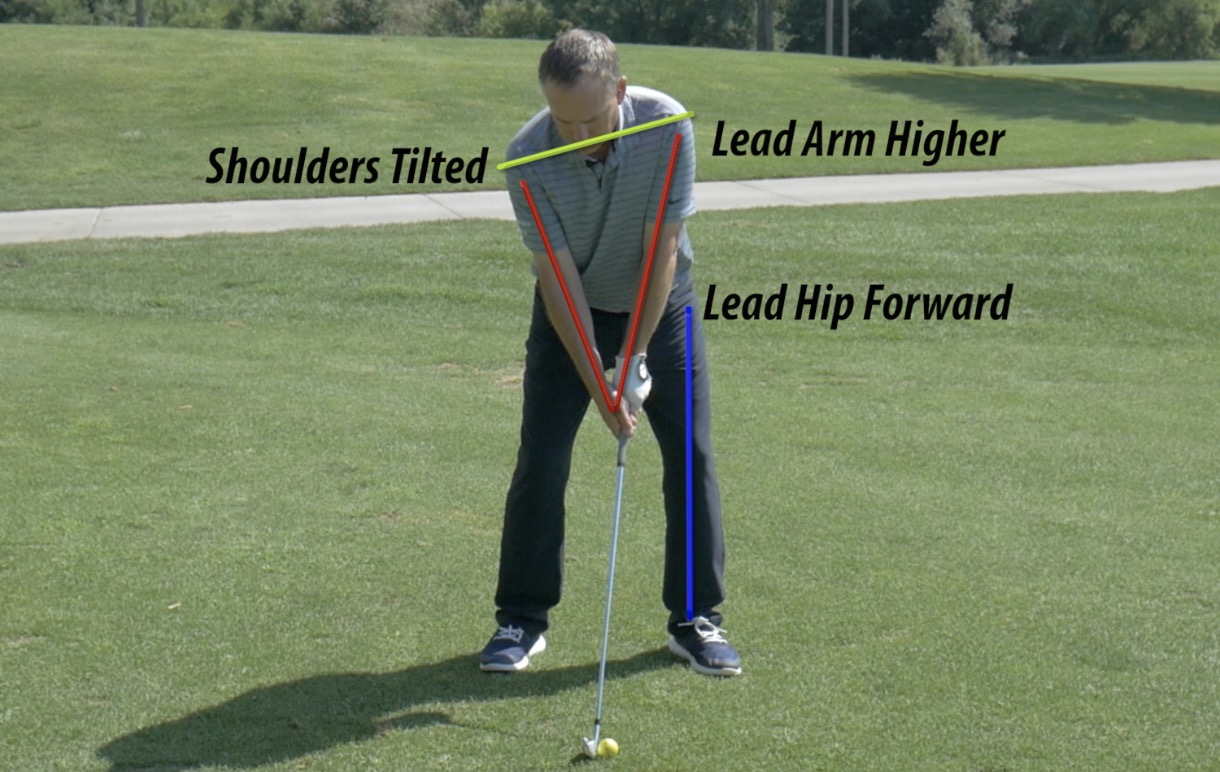
Now you have the perfect tilt and the correct arm structure.
These simple adjustments in setup can go a long way toward fixing the slice.
How else can you fix the slice?
Well, you can adjust your swing motion to proper draw technique. Here’s how.
How Do You Control a Draw in Golf?
If you want to hit a draw, follow the same proper golf setup you use to avoid a slice.
- Put more pressure on your lead foot.
- Raise your lead arm slightly higher than your trail arm.
- Tilt your upper body away from the target.
Once you’ve done that, it’s all in the swing.
More specifically, it’s all in two common problem areas within your golf swing. Here are some essential slice vs. draw tips for your takeaway and transition.
Problem Area #1: The Takeaway
The takeaway is basically the beginning of your swing. It’s the moment you carry the clubhead back away from the ball.
There are two common errors in the takeaway that cause many golfers to slice the ball. When you take your next shot, notice:
Are your arms disconnecting from your body on the takeaway?
Another way to think of it is: are your arms working independently from your body rotation?
If the answer is yes, you’re not likely to hit a draw. In fact, you’ll probably hit a slice.
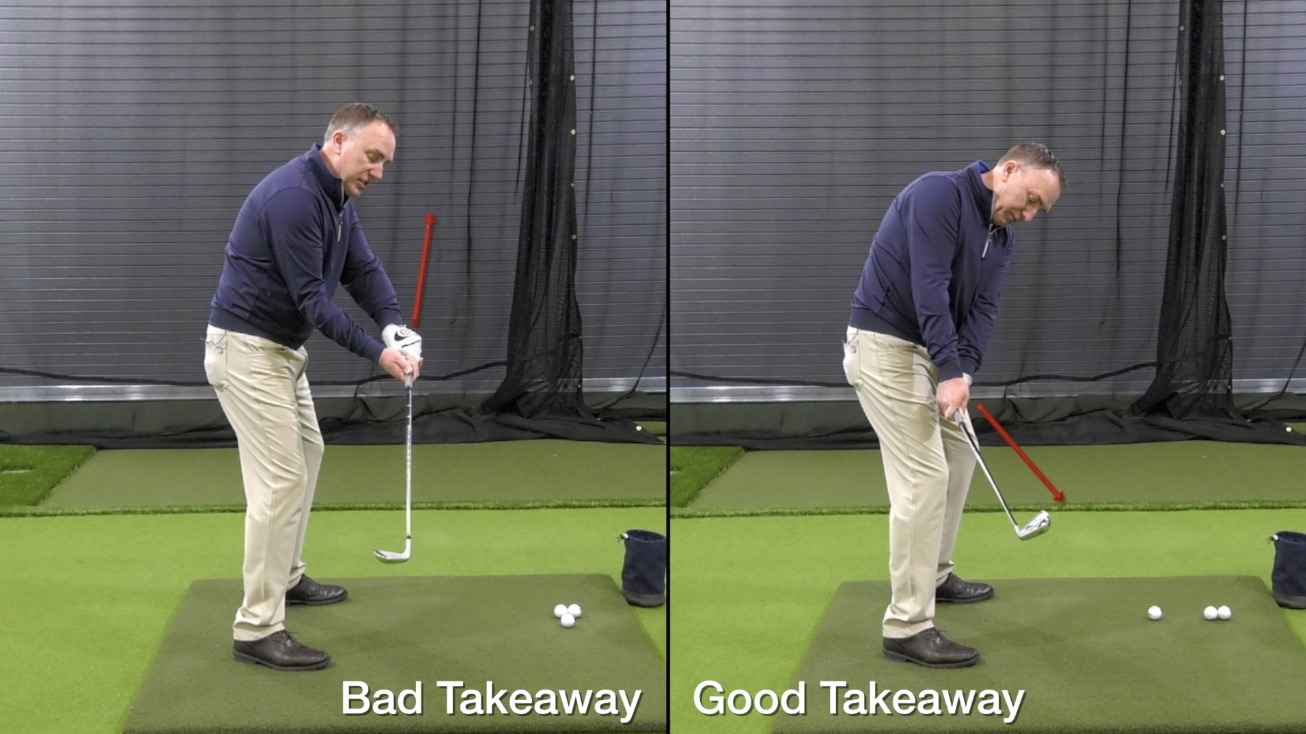
To fix it:
- Holding your club in your lead hand, raise your lead arm out in front of you.
- Pull your arm in closer to your body so you feel your upper arm against the leading edge of your chest.
- Maintain the connection between your arm and chest as you take your setup and swing back.
The key here is to keep your body and arms working together as one connected unit. Your arms move back with the rotation of your body.
Next, notice:
Are you rotating the club face open on the takeaway?
If the face rotates open, you’re set up for a slice. If the face stays square on the takeaway, you’re golden.
This seems impossible to gauge without looking back at the ball, but there’s actually an easy trick here. Just pay attention to the logo on your golf glove.
- If the logo rotates up toward the sky on the takeaway, you’re probably rotating the club face open.
- If the logo points down at the ball, the face is probably square, and you’re on your way to hitting a draw.
Problem Area #2: The Transition
The transition is rough for a lot of golfers. This is where a lot of golf swings break down.
When I talk about the transition, I’m talking about the moment in your swing when the club moves from backswing to forward swing (or downswing).
Fine-tuning your transition is difficult because this segment of your swing involves reversing the direction of your motion. It’s also complex, and it happens in a fraction of a second.
Fortunately, I have a really easy tip for cultivating a smooth, controlled transition.
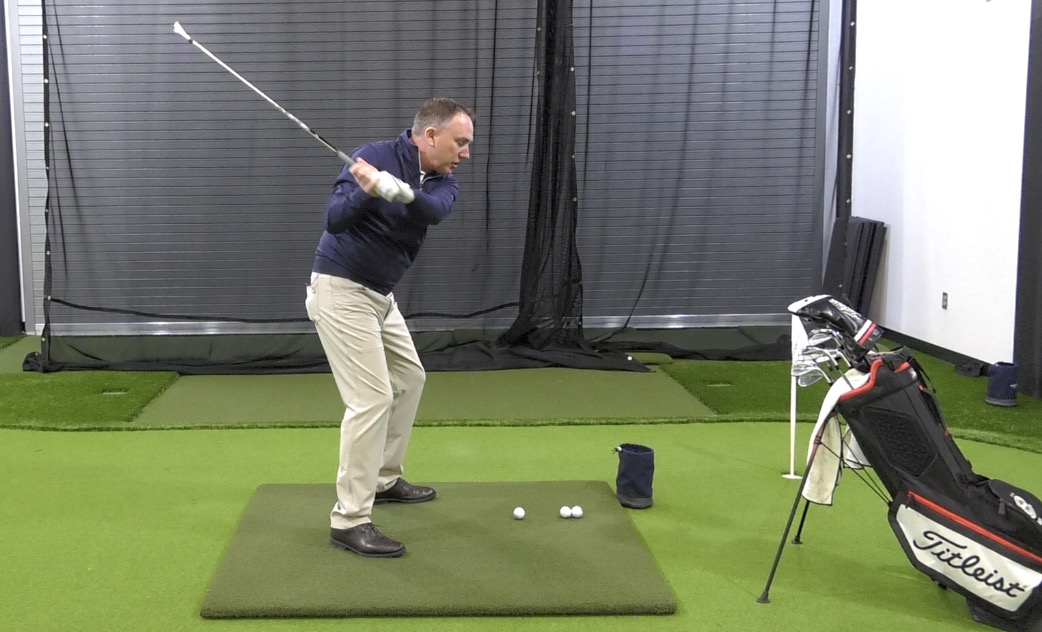
First, relax your arms and hands.
Many golfers tend to tense up in the transition, especially off the tee. This happens because they’re trying to pack their shot with extra power. They want to swing their driver really fast and really hard to get the best possible distance.
The fact is, all that tension only hurts their distance. Plus, that mindset of generating speed causes them to work their arms out and across.
Here’s the trick to fixing this problem. You have to keep your arms and hands soft. Don’t think about swinging down with force. Instead, keep your arms in close to the body and allow your swing motion to be a byproduct of body rotation.
It may sound counter-intuitive, but it works.
I also recommend this drill for ensuring a smooth transition:
- Stand with your feet together.
- Hold your club out in front of you, as if you’ve just made impact with your golf ball and are heading towards finish position. Take your backswing from this position.
- As you swing back, step your lead foot toward the target.
- Complete your swing normally, with or without a ball.
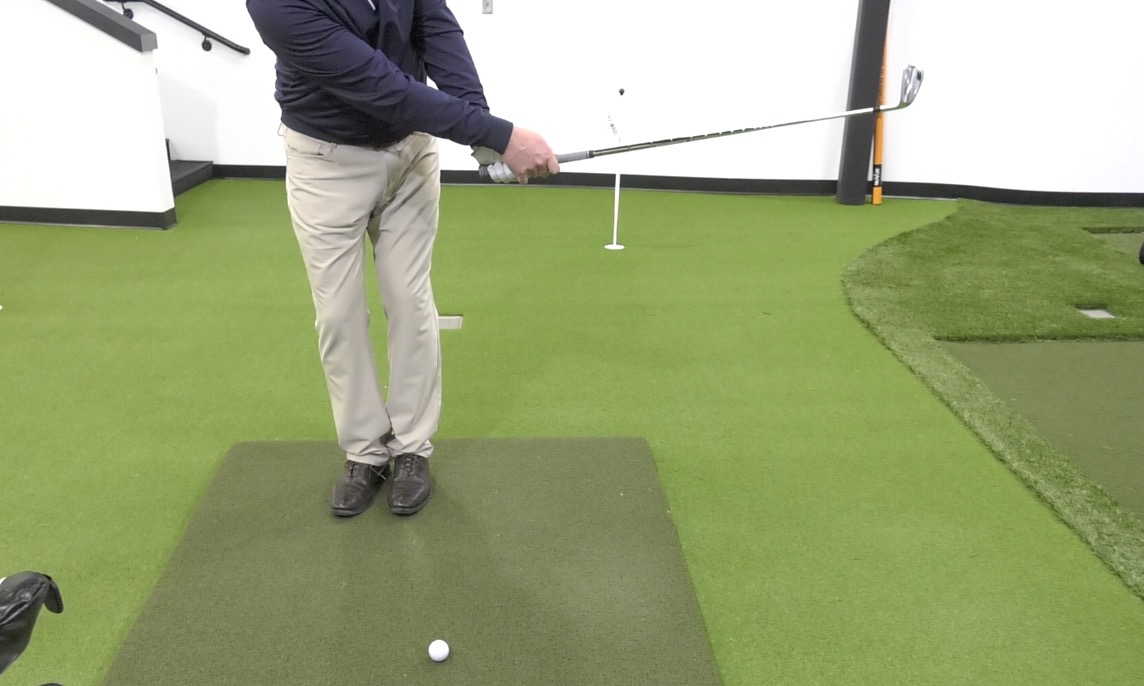
This simple drill helps you find more control and smooths your transition.
Try all these swing tips, and you have a great shot at hitting a draw consistently through all eighteen holes.
Best Clubs to Use When Fixing a Slice or Hitting a Draw
When it comes to winning the battle of slice vs. draw, you can use an iron or a driver. Either club works just fine. And in fact, you ‘re probably more inclined to slice with one than the other.
Some golfers have very little trouble off the tee, but they are inclined to slice their irons.
Other golfers—I’d say most golfers—battle the slice more often when hitting a driver.
There are a few reasons for that difference.
The first reason is simple. When golfers hit it off the tee, they’re often trying to ramp up their swing speed. As a result, they create more tension in the transition, which—as we know—causes them to slow down, swing from the outside, and slice the ball.
The second reason is a bit more complex.
Irons vs. Drivers
Without digging too deep into the details, I’ll explain this much about hitting irons vs. drivers:
You always want to hit down on your irons and hit up on your driver.
Because these two different golf swings come with two different goals, there needs to be a slight difference in your form depending on which club comes out of your golf bag.
All of the advice we’ve covered for fixing the slice and hitting a draw . . . that all relates to hitting with your irons. When you hit a driver, many of those tips still apply. But there are some slight differences.
Slice vs. Draw for Your Driver
Remember those tips we covered for proper setup? You’re going to follow the same advice when you’re at the tee box. All those tricks I taught you help you get on the right swing plane.
Now I’m going to add a couple more tips to perfect your angle of attack.
So, keep doing this:
- Put more pressure on your lead foot.
- Raise your lead arm slightly higher than your trail arm.
- Tilt your upper body away from the target.
But now, also do this:
- Bump your lead hip over your lead foot.
- Hold the handle of your golf club just a little higher, shifting the shaft into a slightly more vertical position.
These tiny adjustments help you swing more from the inside and hit up on the golf ball.
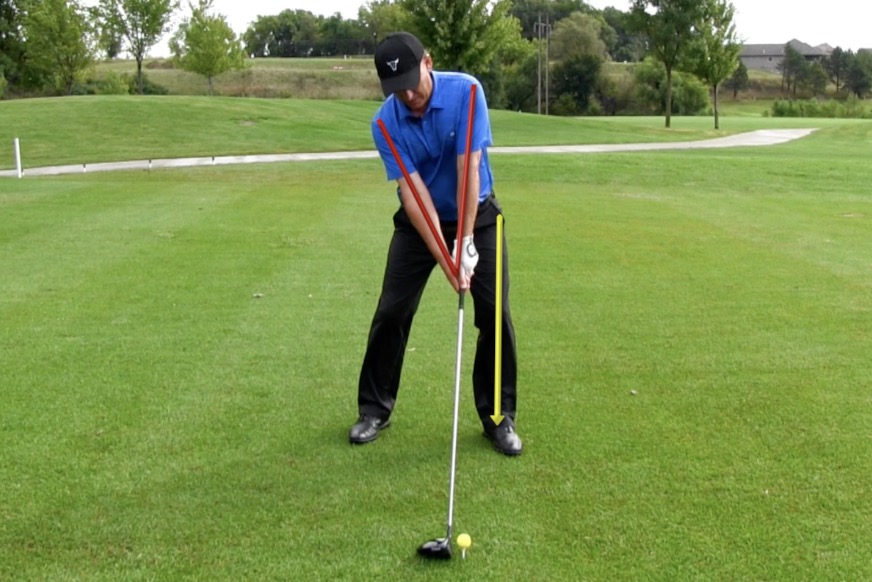
The Drill
Another way to perfect your swing technique for drawing your driver is to think about your finish position. There’s a great drill I use to teach this concept to my students.
- Take an object—any object you want—and place it on the ground a couple feet in front of your ball and to the right of your target path. (If you’re left-handed, place it to the left of the target line.) The object can be a golf towel, tee, head cover . . . anything.
- Take your golf shot.
- Finish with the butt end of your club high, rotated to the right, and pointing at the object you placed on the ground.
If you do that, you’re likely to hit a draw.
On the other hand, if you take your regular swing and find that the butt of your club is low and pointing behind you, it probably means you just sliced it.
The Proper Golf Grip to Fix Your Slice
Many golfers who slice the golf ball tend to hear the same advice to cure their slicing woes. You probably can guess before I even write it: strengthen your grip.
A strong golf grip is not necessarily going to be an end-all cure to your slice. What usually happens when you change your grip is you actually mask the real problem, and before long you start slicing all over again.
Instead, we like to use a more neutral grip, especially for amateur golfers. A neutral golf grip is typically the easiest way to get to the top of the swing and back to impact, without creating some compensation along the way.
So the next time someone tells you to strengthen your golf grip, tell them thanks, but no thanks.
What About Hybrids?
If you’ve really come to love your hybrid, you might feel like I left out an essential club. Trust me, I love hybrids, too. I even have some great hybrid tips for you.
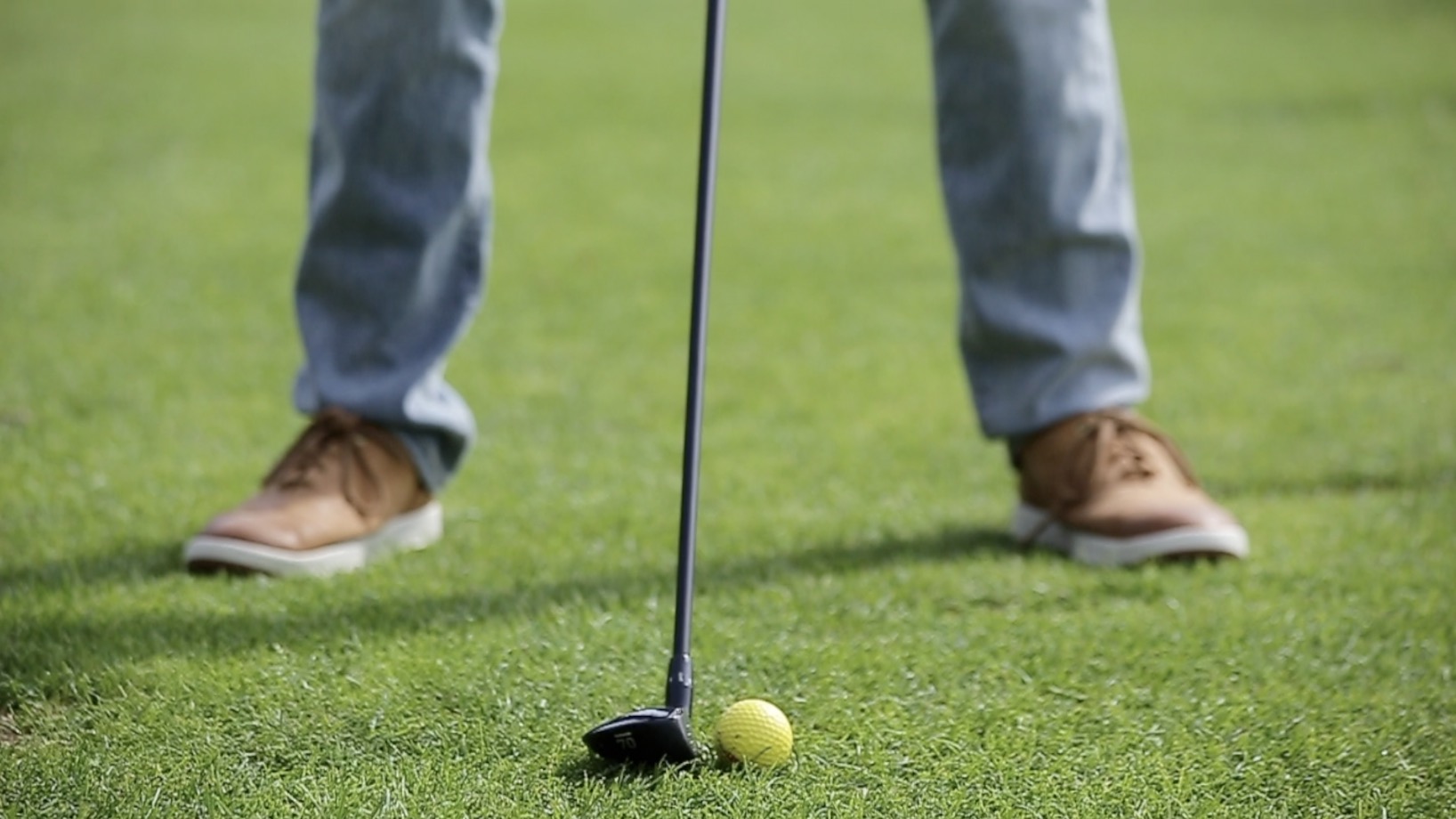
So why am I not talking about them now?
Because generally speaking, you can treat your hybrid as you would an iron, and that counts for slice vs. draw technique, too.
That is to say, you already know everything you need to know about how to hit a draw with a hybrid.
Is There Anything Else I Can Tell You?
Do you have any more questions? Any advice of your own to share?
Join us in the comments and share what’s on your mind.
For more in-depth golf tips, visit us at GreatGolfTipsNow.com. This golf instruction is completely free and packed with detailed advice to help you play better golf!


Thanks for all the great tips Todd. It seems that you are almost looking over my shoulder & picking out topics that I am dealing with! Bill from Virginia
Thanks Bill! We have you covered my friend. More great content coming…